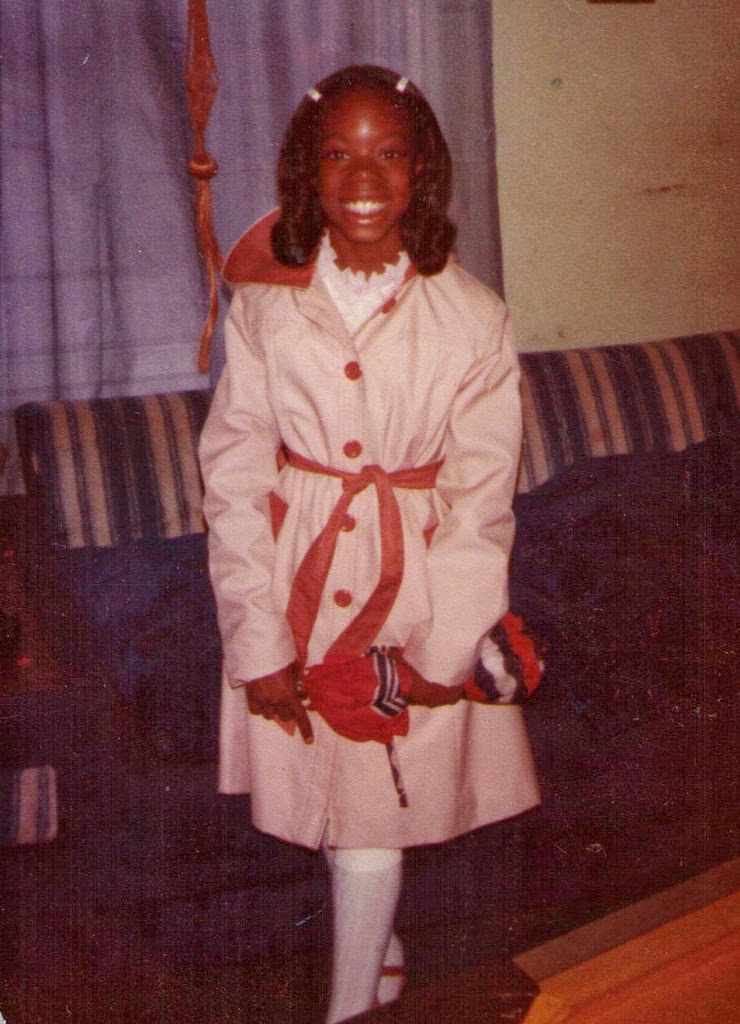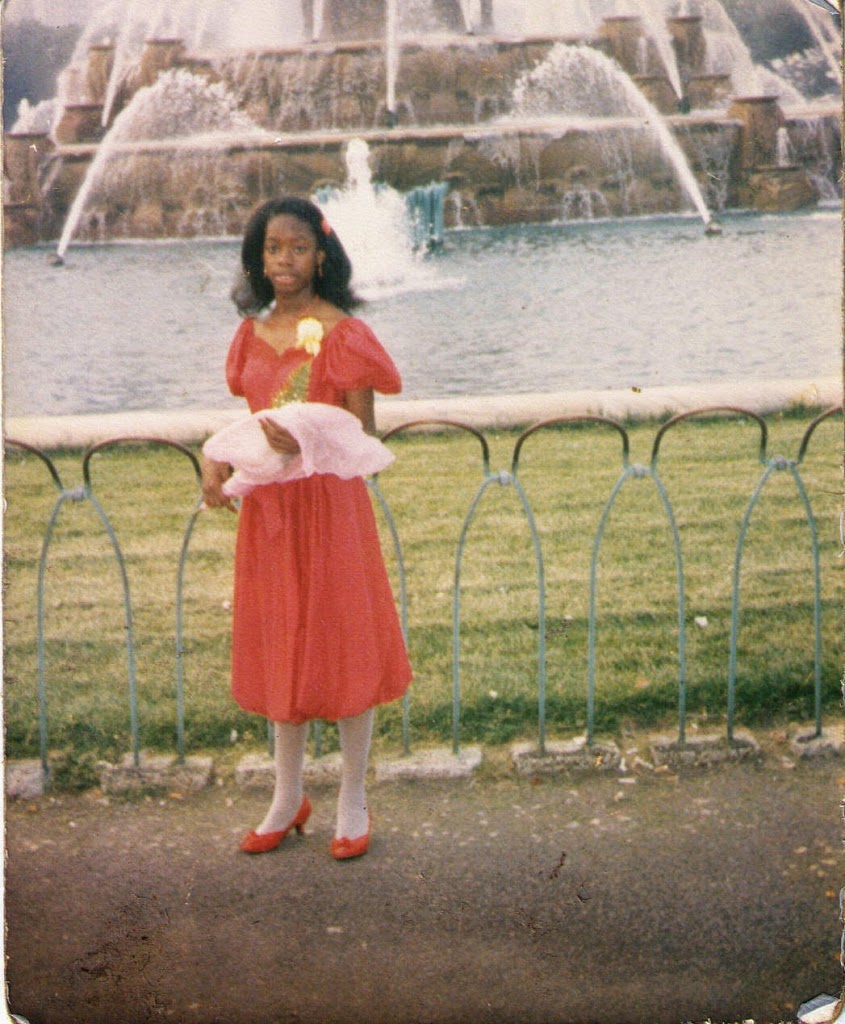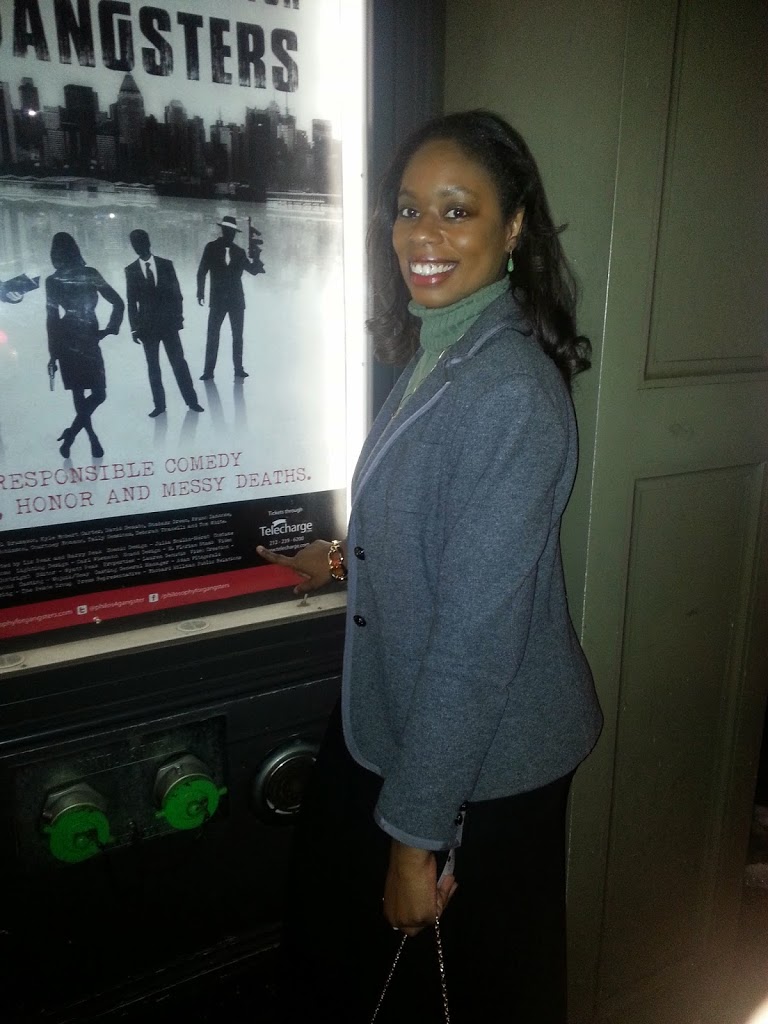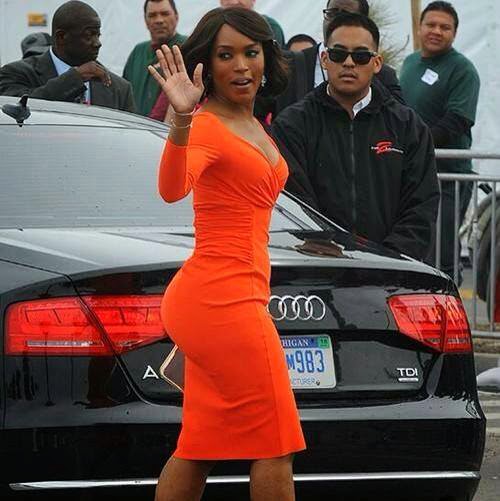“The truth will set you free, but first it will piss you off.” – Gloria Steinem
As a child, my memory of feminism was man haters, not a smile on their face, and not a person of color in their midst. At the age of 8, I claimed my independence as a woman but I wanted no parts of the feminists I saw on television. I recall hearing my mother and other female relatives talk about their experience and impression of the women’s rights movement. Some felt that the women’s right movement rode on the coat tails of the Civil Rights Movement and then excluded the same people that helped benefit the women’s rights movement (women of color). The women’s rights movement did not champion the issues facing working women of color. My mom said there seemed to be a bias towards business women and against stay at home mothers or women in clerical positions. My mom did not like being looked down upon because she chose to stay at home and raise her children. She also did not like that women in the movement assumed the dress and mannerisms of men. She was often asked why she was not part of the workforce. She did not see the benefit of leaving her children to get a job that would essentially go towards childcare costs. She was a married woman. Why was she being shunned for having a family?! My mother, grandmother, and aunts raised, nurtured, and inspired me. If there was no place for the likes of my mother and grandmother among their ranks, then I surely would have no part of feminism or the women’s rights movement.
It seemed to me that for as much as feminism claimed to be against the male establishment, they did a pretty good job of emulating a man in dress and mannerisms. How did I end up here? At the Mother Jones’ Food for Thought panel, Chef Gabby Hamilton mentioned that she hated the assumption that because she was a woman and there was another woman chef in the kitchen that there was an instant bond. She likened it to the assumption that “you’re all black so you all get along with each other.” She noted the double standard of how it was accepted that a male chef could yell, scream, and throw things at staff, but it was not accepted for a female chef due to her “nurturing/comforting” nature. Not all women are nurturing and just because she’s a woman why can’t she have a tantrum? That led to a heated discussion with me and the friend that invited me. She mentioned that the discussion should have addressed sexual harassment in the kitchen and to me she put the onus on Chef Samuelsson to address it. I replied that Mother Jones’ sponsored the event, not Samuelsson. He merely allowed use of his space and was a panelist. If the chefs were speaking from personal experience, although he may have witnessed sexual harassment, his experience was more barriers due to his race. For an analogy, I added that it was not Chef Samuelsson’s duty to address sexual harassment just like it is not my duty to teach white people about black culture to make them feel comfortable around me. The same as it is not a woman’s job to teach men not to be sexist. My friend felt hurt by my comment that it was not my job to teach white people about black culture.
That point of disagreement is what made me decide to go ahead and post this blog, when I originally shelved it for Black History Month. In the words of Martin Luther King Jr., “Injustice anywhere is a threat to justice everywhere.” When I proclaimed to my father my intent to be a career woman, he replied: “You have two strikes against you – you’re a girl and you’re black.” In hindsight, he should have said three. I am a woman, a person of color, and women vag block each other’s success. At least that has been my personal and professional experience. I can count on one hand the number of female mentors I have. Unfortunately, it seemed that the women were so concerned that there could only be “one” that they did not mentor or assist me like my male counterparts. My male counterparts did much more to further my career and teach me tools of the trade. They pushed me, encouraged me to attend events, and were forthcoming about my strengths. Whereas, I found that my female supervisors and managers were never big on praise but heavy on criticism. They did not ask me to tag along to meetings. By the time I finally met women who were willing to mentor me, I was more shocked and questioning their motives because so many others were not helpful or outright undermining.
Being a woman in a “man’s world” is stressful enough. It becomes that much more complicated when other women block your path or use the color of your skin to pre-judge you. As a pre-teen, I skipped a grade. At the age of 12, I went from 7th grade directly to high school. However, I was allowed to attend the 8th grade graduation. My older sister was in that graduating class and my parents had not anticipated two graduation expenses. My father simply worked extra hours to pay for the added expense and to get me a graduation dress. I was so excited because it was the 1980s and I wanted a puffy sleeve dress. My mom took me to a suburban mall in Chicago. We typically went clothing shopping before school began and for Easter. This was a special treat and much more expensive place than our usual shopping spots of Sears and Kmart. I was more excited for the new dress than skipping a grade. We were the only people in the store, yet the saleswoman never approached us. After waiting a while, my mother asked for assistance. The saleswoman replied, “We don’t have anything for boys.” That was shocking because although I was still flat chested, it was more than obvious that I was a girl. My mom responded, “She is not a boy.” The saleswoman, “We don’t have anything for you here.” What was supposed to be a joyous occasion was marred by the white saleswoman’s refusal to serve me and my mom.
I understand that we do not live in a world free from prejudice. However, it is so much more hurtful when I encounter prejudice from within my own culture and gender.
Having experienced going to a suburban high school where minorities students were less than 1% of the student body, I was not concerned about the fact that in my college dorm of 300 women, there were only five African Americans. It did not stop me from being elected dorm president by an 86% margin and the first African-American president in my dorm’s history. The girls in the dorm dubbed me “the fearless leader.” However, there was the time when we were all hanging out in my dorm room and some girls noticed my shampoo/hair routine differed from theirs. Most asked to understand the difference. But one young white girl who had never been exposed to any culture other than her privileged upper middle class community, told me that I was suppose to wash my hair daily. I explained to her that black hair texture is different and shampooing our hair daily is actually detrimental to our hair. She insisted that regardless everyone must shampoo daily. Ignorance is one thing. She went beyond ignorance into stupidity. I have no problems answering questions when people do not understand or have not been exposed, but please do not bring your assumptions, stereotypes, or biases to the table.
My last year in law school, I finally took the plunge and took a Feminism & the Law class. I did it more because it fit my MWF schedule opposed to real interest because until then I still disliked the term feminist and would not associate with it. However, in that class, I became knowledgeable about the different types of feminisms. Much like denominations in Christianity, there was variety. To my surprise, I found a brand of feminism that I identified with, namely difference/cultural feminism. I am not sure if that knowledge was helpful or harmful as I began my professional career as an attorney that was a woman and a person of color.
As a young lawyer interviewing at law firms, I have experienced illegal questions about race and/or gender. Three interviews stick out. I interviewed for a clerkship with a state judge. He looked at my resume and gave me a verbal lashing that started with: “Oh so you think because you worked with Johnnie Cochran and Willie Gary you’re going to come here and run stuff. Let me tell you something, I could have been as famous as Johnnie but I chose to be a public servant.” The judge continued on that rant for the half hour allotted for the interview. I said nothing and walked out. I might have to appear before him one day in court and could not jeopardize my legal career before it started.
Then there was the interview at the small boutique firm with a “family atmosphere.” My first indication something was wrong was when I asked about the firm’s benefits – medical, dental. The named partner replied, “Like we know? We’re both married to teachers and we use their insurance. We carry the minimum required by the state for a company our size.” However, we when started to get into substantive legal issues, the interview seemed more positive. As the interview came to a close, the other partner looked at me and said, “We’d like to have you on board but we need to make sure you’re not an ‘Omarosa’ type. You’re not going to come in and try to run stuff.” For probably the first time in my life, I was struck silent. Their use of “Omarosa” type was code for “angry black woman,” much like the use of the word “thug” today replaces the “n” word. I stood up and walked out of the interview.
Maybe I should have seen those comments coming. They were men. However, at another interview I sat in a conference room with seven partners, only one was a woman. She sat at the head of the table. I was seated directly across from her at the other end. Three partners sat on each side of me. The position required litigation 70% of the time and transactional work 30%. The transactional work would be with the woman partner. The men went out of their way to make me feel comfortable and welcomed. The woman partner simply stared at me. She made no attempts for the usual interview banter. Although most of my experience was litigation, I had worked transaction with one of the few female attorney mentors that invested in my professional development. She gave a me a glowing reference. The male partners were very excited about my litigation experience. After an hour of answering questions, the woman partner flat out said, “I’m sorry but I only see you as a litigator. You probably can do transactional but all I see is a litigator.” With that, my interview was over. The male attorneys apologized and said that she had the final say and wished me well in my search.
Why do women do that to each other? Men will hire a friend of a friend without knowing his qualifications and say give him three months to prove himself. This woman was worst than any male interviewer I had.
Consistently, in the women’s professional and networking groups, I am frustrated by the lack of women of color represented among their ranks. I am tired of Vogue magazine insisting that only a European woman’s shape is beautiful. If I hear another woman talk about being afraid of a big bum, I will scream. Even when I was a “skinny mini” a big bum was my reality. I grew up seeing beautiful curvy healthy women of color. The Commodores wrote about a “brick house” shape on a woman, but every women’s magazine I pick up has photo shopped even rail thin models skinnier. I have curves and if Lulemon does not think my body type is worthy of its clothing then I will not support them or any of their businesses. Maybe that is why I have an aversion to yoga. Some women wear yoga pants to give the illusion of a butt, but when someone (like me) who has a real bum with no artificial fillers wears yoga pants that is too much. On a daily basis, television, media, and women’s magazines make it clear that my body type is “not the standard of beauty.” In the words of Sojourner Truth, “Ain’t I a woman?” Models of color like Chanel Iman and Jourdan Dunn have lamented the refrain in the industry of “we already have one black model.” Excuse me. We come in various shades of brown and black. Why can’t there be more than one model of color in your magazine or runway?! Yet Vogue features models in black face. Don’t get me started on Disney’s decision not to cast a person of color for the role of Tiger Lily in the latest release of Peter Pan. Gloria Steinem said: “Most women’s magazines simply try to mold women into bigger and better consumers.” I believe when it comes to women of color, most women’s magazines seek to make us feel less and less like a woman because they refuse to embrace the diversity among the sisterhood.
Women of color have been objectified, sexualized, and vilified for our full lips, hips, and bums, yet when our Caucasian counterparts inject their lips and butts it is en vogue; whereas, we are portrayed as “exotic” or “overly sexual.” The crass comments about Michelle Obama’s butt in 2008 were vicious and ultimately an assault against black women – your bodies are not beautiful because they are different. Michelle is a beautiful, educated, black woman from my neighborhood – the south side of Chicago working class. Michelle and her daughters are a role model for every little black girl that was told her body and face did not reflect beauty. Thank goodness for Lupita Nyong’o and her speech on black beauty! Black is beautiful and sisters of color would like to see our various shades represented in more than a music video.
I started my blog in 2010. Not until April 2013 did I post a picture of myself because I did not want to be stereotyped. There is so much more to me, yet people chose to put me in a box. Unfortunately, I get boxed in more by women than men.
Last year about this time, I wrote a post titled from Sheryl Sandberg to Adria Richards. Adria Richards, an African American woman, attended a tech conference where two male attendees seated behind her made reference to tech parts in a sexual way. She snap a photo and tweeted the substance of their conversation. The men were removed from the conference and later fired. What amazed me most was the comments by women against Ms. Richards! Talk about the worst form of vag blocking. Although I would not have proceeded in the manner Ms. Richards chose, no woman should have to be subjected to that. These were grown men well aware of their actions. I was less concerned over the men that rallied behind the “poor man that lost his job for making dongle jokes” and more appalled at the women that instead of supporting Ms. Richards, chose to criticize how she addressed the situation. So much for leaning-in and supporting the sisterhood.
Women, why do we vag block and become “mean girls?” Why do we think that the only way ahead is to tear down another woman? If only Ms. Steinem’s words were practiced by women then we could truly run this world. “Feminism has never been about getting a job for one woman. It’s about making life more fair for women everywhere. It’s not about a piece of the existing pie; there are too many of us for that. It’s about baking a new pie.”
To my sisters of all colors, I may not have your facial features, body, or skin tone, but ain’t I a woman? I love you, but please embrace our diversity because it is our strength. United we stand and divided we fall.
“This is no simple reform. It really is a revolution. Sex and race because they are easy and visible differences have been the primary ways of organizing human beings into superior and inferior groups and into the cheap labor on which this system still depends. We are talking about a society in which there will be no roles other than those chosen or those earned. We are really talking about humanism.” – Gloria Steinem
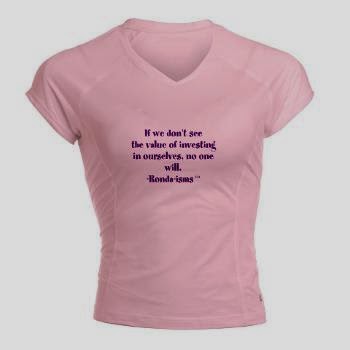
Twitter:@Rondaisms
